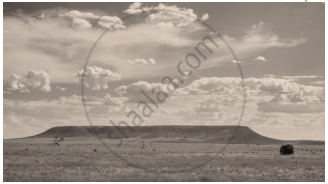Advertisements
Advertisements
प्रश्न
How is the Himalayan River system different from the Peninsular River system?
उत्तर
| Himalayan River System | Peninsular River System | |
| 1 | The basins and catchment areas of the Himalayan rivers are huge. | The basins and catchment regions of peninsular rivers are relatively smaller. |
| 2 | Snowfall feeds these rivers, which flow continuously throughout the year. They are, hence, everlasting. | Rain is the main source of water for these rivers, and the monsoon season has a big impact on how much water flows through them. They are seasonal as a result. |
| 3 | These rivers create deep gorges. | The rivers run in low-lying valleys. |
| 4 | These rivers are used for both navigation and irrigation. | These are not the best rivers for transportation or irrigation. |
APPEARS IN
संबंधित प्रश्न
Answer the following question.
Give three differences between the Western and the Eastern Himalayas.
Name any two standard geological eras, along with their duration.
Answer the following question.
Explain the formation of Himalayas with reference to the theory of Plate Tectonics.
Answer the following question:
The figure below represents a section from the Aravalis to the Peninsular region.

Identify any two of the relief features marked, A, B, C, and D.
(i) Where is the New Mangalore Port located?
(ii) What is the chief importance of this port?
Name the following :
A historic place in Rajasthan.
The main Standard geological era is ______.
Mention any two characteristics features of the Himalayas.
Assertion: The Himalayas were formed due to the collision of tectonic plates.
Reason: Indian plate moved northwards and pushed beneath the Eurasian Plate leading to the compression of sediments in the Tethys Sea.
Identify the image given below and explain the formation of this geological division in India.

